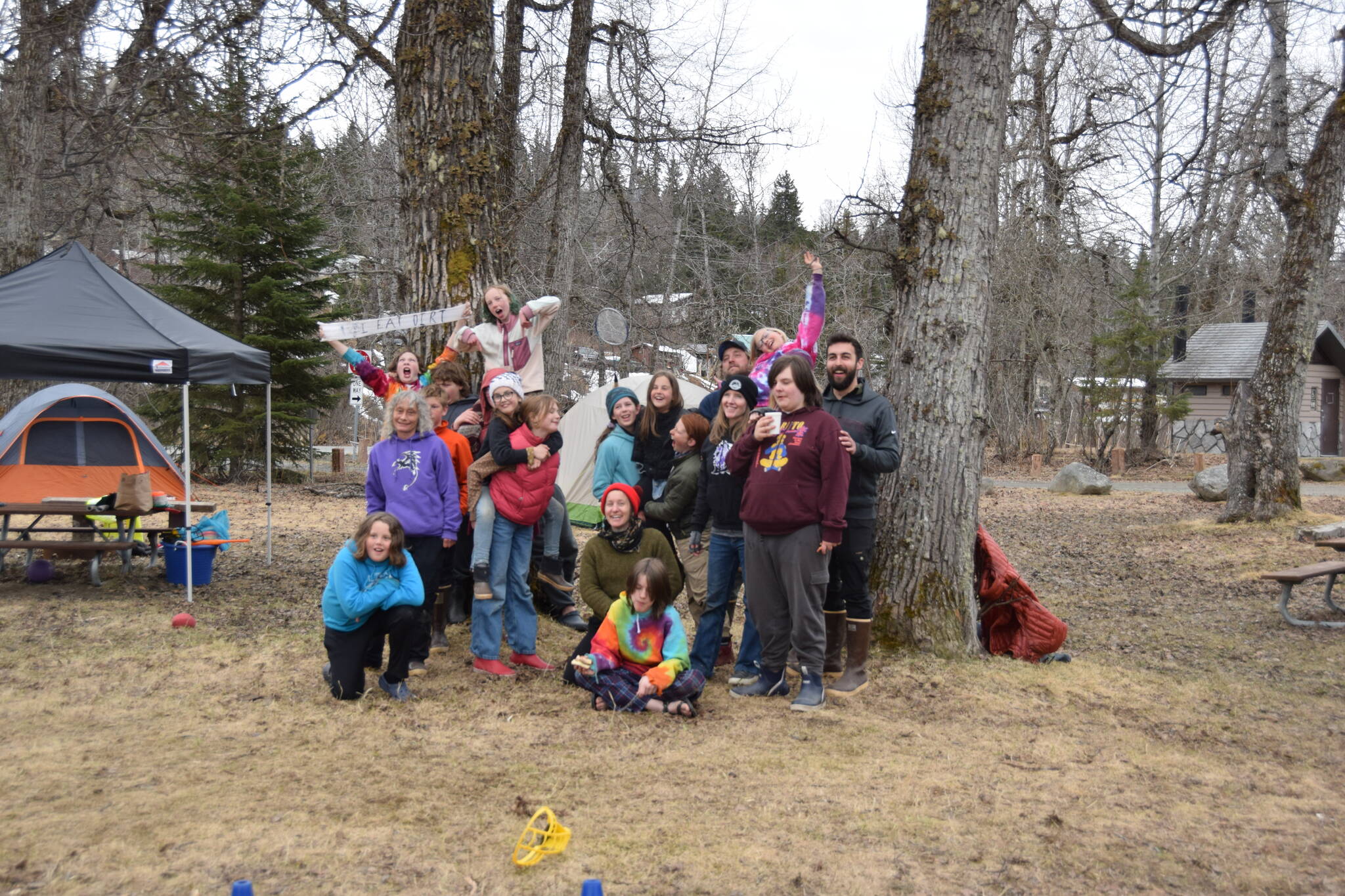On Tuesday morning, May 9, sixth grade students in Carly Garay’s Fireweed Academy class are impatiently waiting to begin their end of the year trip to the Anchor River for an overnight camp session before the end of the school year.
I’m volunteering as a parent driver but also because I remember my own trips to the Anchor River and beach campgrounds at various times over the years and I want to see how the kids today experience the chance to be outside of the classroom.
Carly asks if there are any last minute questions she can answer before we hit the road with the parent drivers. The first question is, “Can we go swimming at the beach?”
Carly responds, “No, and we can’t get in the river either. I know it’s fun to do that sometimes but not on this trip.”
The second eager question is, “Can we take our shoes off?”
Again, no, because there might be glass on the ground at the campsite.
By 8:30, we load up the cars and head north on the Sterling Highway to the Coho Campground on the Anchor River. We arrive and the river is rushing higher than usual with the late melt of snow on the Kenai Peninsula.
Cottonwood buds are bursting green on the trees above the river and around camp it’s chilly but starting to smell a little like spring, finally, just one week before the 2023 school year finishes.
Students set sleeping bags and gear on a picnic table and immediately begin to explore the site, especially interested in the river swell by the banks. Eventually they do dip feet in, even if they keep their boots on.
Water in all the local streams has caught my own attention in the past few weeks, running to Kachemak Bay, Cook Inlet, ready for the season change. To be out in the open reminds me of how to use language to interpret landscape and that people, our students here, are part of the place around us.
All of this takes me back to the methods of water for interpretation, no map can show us the ceaseless transition in a river. Ice breaks, finally it returns to the ocean.
This is a piece I wrote, not necessarily for the Anchor, but while studying the Copper and the 1938 book “The Eyak Indians of the Copper Delta, Alaska” by anthropologists Kaj Berket-Smith and Fredrica de Laguna.
It’s not a final draft, just a way to explore Part II of the book, “Eyak Folklore.” Most of the stories contain some component of the relationship between human, Raven and the Copper River and flats.
Human Tides
All animals are here like we are
Hunting, trapping or gathering;
Living to watch, to act, to interact, to eat and live.
Cockles, butter clams, razor clams, octopus, mussels, bears, moose, seals, ducks, eggs, geese, seaweed, trout and other fish in the river. The Salmon.
They are cited as food and characters for collaboration daily. Though honored in most cases, the stories don’t sound rare. Rather, these are the stories everyone knew.
Typical memories, the expectations. This is what you do when you see pussy willows, this is who comes first in the summer, and this is who greets us in the spring.
The collaboration, the interaction is family, friendships, relationships, marriages, children, loss, friction, conflict, control and power. They interact for luck, for wishes, for sustenance. They interact and lose or find unbearable injury and pain.
The tides of the flats, the salty smell of the tide
A rise and fall — daily, twice.
This brings different delicacies and collections; different challenges and dangers.
The water is everywhere;
Ebbs and floods bring everything.
Transitions and losses,
Oil and earthquakes,
Salmon traps and traffic tunnels
Herring and razor clams
Species in the Sound,
Accessibility, availability transition through time.

